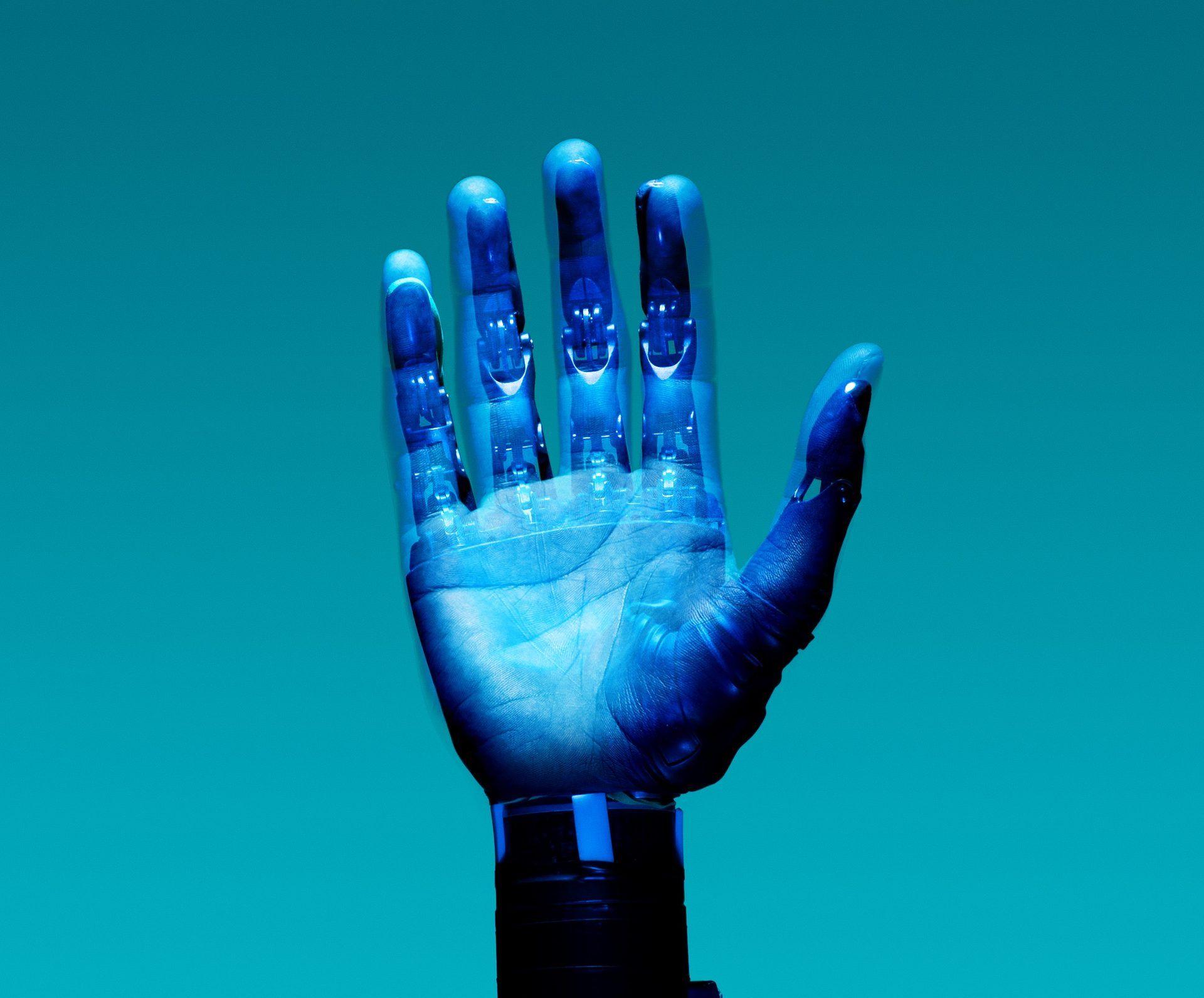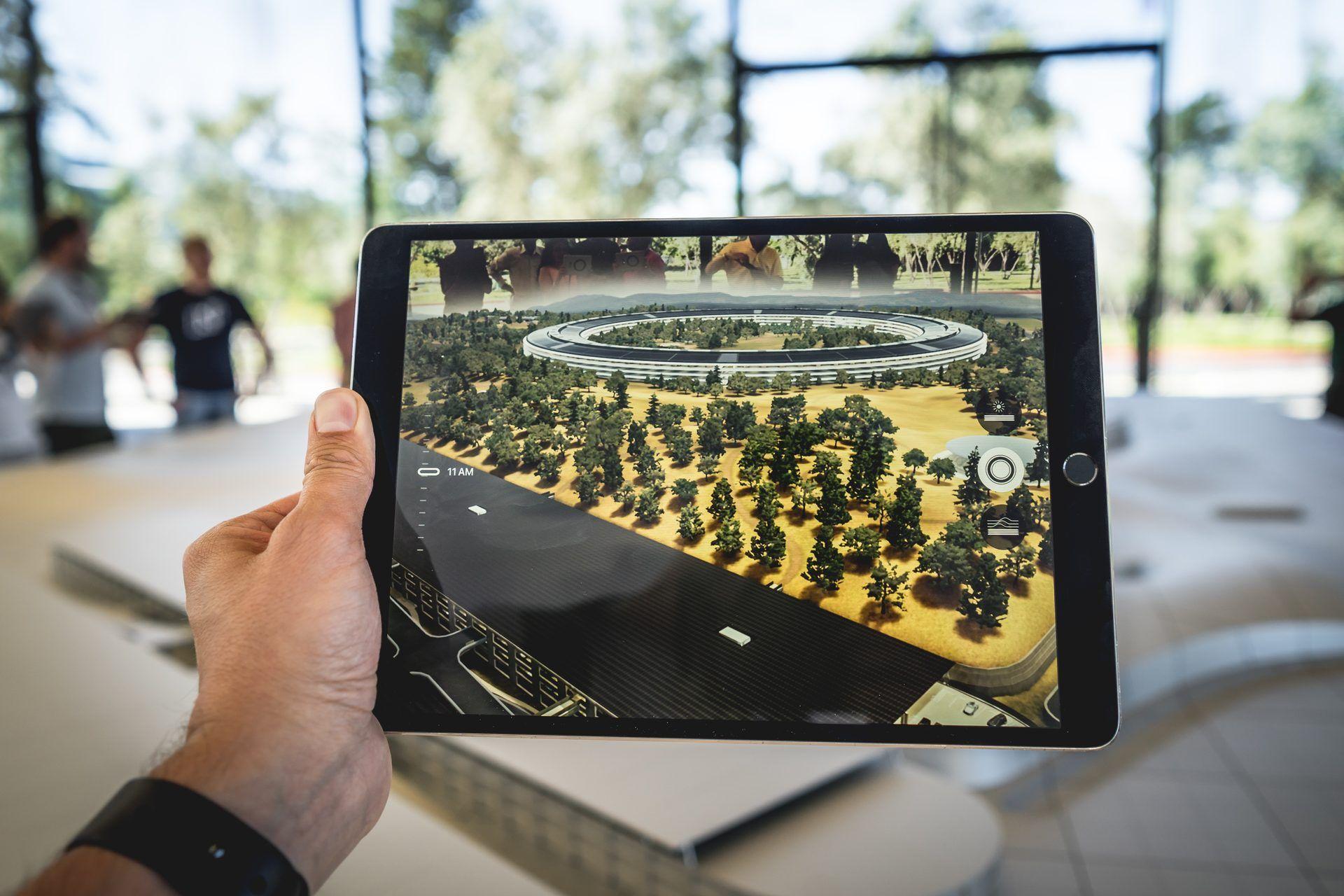Stepping into the dynamic landscape of 2023, we find ourselves at the crossroads of innovation and possibility. The rapid pace of technological advancement continues to reshape the world as we know it, ushering in a new era of transformative possibilities.
From the realms of artificial intelligence that have grown far beyond our wildest imaginations to the fusion of reality and the virtual, this year has already unveiled an array of emerging technologies that will redefine industries, elevate human experiences, and challenge the fabric of our existence.
In this exploration of 2023’s emerging technology trends, we embark on a journey through the frontiers of innovation, where groundbreaking ideas converge with tangible reality, and the future takes its bold and exhilarating shape.

5 emerging technology trends of 2023 so far
Peering into the horizon of 2023, it’s evident that we are on the cusp of a revolution that transcends the boundaries of what was once deemed possible, and these emerging technology trends are proof of this:
- AI
- AR & VR
- Datafication
- Digital immune system
- Room temperature superconductors
Even though you have presumably heard them all before, do you truly get their significance? Keep reading and learn everything you need to know about the emerging technology trends of 2023.
AI: The star of 2023
Welcome to the AI-driven era. In the ever-evolving tapestry of technology, one thread shines brighter and more profound than ever before: the inexorable rise of Artificial Intelligence (AI). As we traverse through the year 2023, we stand witness to the astounding culmination of years of research, development, and imagination as AI ascends to unprecedented heights of capability and influence.

The effects of Artificial Intelligence in everyday life are rising, whether we are aware of it or not. The impact of AI will be seen in almost every industry around the globe. Indeed, that includes physicians, attorneys, and others. Artificial intelligence (AI) is the capacity of robots to do tasks that normally require human intelligence. What if, nevertheless, it turns out to be superior to humans? Amazing images, articles, and code that normally requires years of training can now be created in seconds with AI. Thus the only competition will be to see who can employ AI the quickest and most effectively.
Are you new to AI? You can still get on the AI train. We have created a detailed AI glossary for the most commonly used artificial intelligence terms and explain the basics of artificial intelligence as well as the risks and benefits of AI. Feel free the use them. Learning how to use AI is a game changer! AI models will change the world.
Do you know to differentiate AI from non-AI? You should learn it. AI has entered our lives so much, and now we have artificial intelligence laws and regulations. Be careful; there are artificial intelligence security issues.
Popular questions about AI
- Are robots artificial intelligence? No, but robots can become intelligent, largely thanks to AI.
- Is artificial intelligence better than human intelligence? Before you decide, take a look at real-life AI applications.
- Artificial intelligence in sports
- Artificial intelligence in science
- Artificial intelligence used in the military
- AI in recruitment
- AI in gaming
- Artificial intelligence and automation
- Artificial intelligence in banking
- Artificial intelligence in developing countries
- Big data and artificial intelligence
- Artificial intelligence in education
- AI in supply chain management
- Artificial intelligence in business
- Artificial intelligence in manufacturing
- Artificial intelligence in self-driving cars
- AI in financial services
- AI in insurance
- Artificial intelligence customer services
- AI in agriculture
- Artificial Intelligence in Industry 4.0
- Artificial intelligence design
As you can see above, from reshaping industries to redefining how we interact with the world around us, AI’s pervasive presence is felt in every facet of our lives. However, its indisputable popularity started with ChatGPT.

From the moment ChatGPT made its debut, it captivated minds and sparked imaginations, demonstrating the remarkable capabilities of AI-powered language generation. However, what truly sets 2023 apart is the profound impact ChatGPT has on diverse industries and sectors, seamlessly integrating into areas we never thought possible.
Do you want to learn how to use ChatGPT effectively? We have some tips and tricks for you without switching to ChatGPT Plus, like how to upload PDF to ChatGPT! However, When you want to use the AI tool, you can get errors like “ChatGPT is at capacity right now” and “too many requests in 1-hour try again later”. Yes, they are really annoying errors, but don’t worry; we know how to fix them. Is ChatGPT plagiarism free? It is a hard question to find a single answer, but generally, no, it is not plagiarized. Is ChatGPT Plus worth it? Visit the related article and find out!
Gone are the days of waiting on hold; instead, users engage in fluid conversations, receiving real-time assistance that feels akin to interacting with a human expert and ChatGPT is not the only AI tool that people are falling in love with it.
Almost every day, a new tool, model, or feature pops up and changes our lives, and we have already reviewed some of the best ones:
- Text-to-text AI tools
- Bard AI
- Chinchilla
- Notion AI
- Chai
- NovelAI
- Caktus AI
- AI Dungeon
- ChatGPT
- Snapchat My AI
- DuckAssist
- GrammarlyGO
- Jenni AI
- Microsoft 365 Copilot
- Tongyi Qianwen
- AutoGPT
- Janitor AI
- Character AI
- WordAi
- Venus Chub AI
- Crushon AI
- FreedomGPT
- Charstar AI
- Jasper AI
- WormGPT
- Llama 2
- Kajiwoto AI
- Harpy AI Chat
- RizzGPT
- GigaChat
- Text-to-image AI tools
- MyHeritage AI Time Machine
- Reface app
- Dawn AI
- Lensa AI
- Meitu AI Art
- Stable Diffusion
- DALL-E 2
- Google Muse AI
- Artbreeder AI
- Midjourney
- DreamBooth AI
- Wombo Dream
- NightCafe AI
- QQ Different Dimension Me
- Random face generators
- Visual ChatGPT
- Adobe Firefly AI
- Leonardo AI
- Hotpot AI
- DragGAN AI photo editor
- Freepik AI
- 3DFY.ai
- Photoleap
- Artguru
- Luma AI
- BlueWillow AI
- Scribble Diffusion
- Clipdrop AI
- Stable Doodle
While there are still some debates about artificial intelligence-generated images, people are still looking for the best AI art generators. Will AI replace designers? Keep reading and find out.
- AI video tools
- AI presentation tools
- AI search engines
- AI interior design tools
- Other AI tools
Do you want to explore more tools? Check out the bests of:
- Free AI art generators
- AI logo generators
- AI checkers
- AI drawing generators
- AI photo editors
- Text-to-video AI tools
- AI headshot generators
- AI avatar generators
- AI voice generators
- AI crypto projects
As a start of emerging technology trends of 2023, AI took the biggest place in our article. Well deserved! Now keep continuing with other emerging technology trends.
AR & VR
The rise of Augmented Reality (AR) and Virtual Reality (VR) has been a significant technological trend in recent years, with profound implications for various industries and aspects of our lives. Here’s an overview of their rise:
AR refers to the integration of digital information or virtual elements into the real-world environment. This technology overlays computer-generated images, videos, or data onto the user’s view of the physical world, enhancing their perception and interaction with the surroundings.

Some key developments in the rise of AR include:
- Mobile AR apps: The widespread adoption of smartphones with powerful processors and cameras has driven the development of mobile AR applications. Apps like Pokémon GO brought AR experiences to the mainstream, enabling users to interact with digital objects in their real surroundings.
- Industrial applications: AR has found applications in industries like manufacturing, healthcare, and education. It has been used for maintenance and repair guidance, medical visualization, and interactive learning experiences.
- Smart glasses and wearables: Companies have been working on AR glasses and smart wearables that provide a more immersive and hands-free AR experience. These devices have potential applications in fields such as enterprise, navigation, and entertainment. Apple Vision Pro is the latest example of this.
- Marketing and retail: AR has transformed marketing campaigns by allowing brands to create interactive and engaging experiences for their customers. Virtual try-ons, product visualizations, and interactive advertisements have become more common.
VR involves the creation of entirely immersive digital environments that users can interact with. VR typically requires the use of a head-mounted display (HMD) and often includes input devices like controllers or gloves.

Key developments in the rise of VR include:
- Gaming and entertainment: VR has gained significant popularity in the gaming industry, offering players an immersive and interactive experience. Games, simulations, and interactive storytelling have been central to VR’s growth.
- Training and simulations: VR has been adopted for training purposes in fields such as aviation, healthcare, military, and more. Simulating real-world scenarios in a controlled environment can provide valuable learning experiences.
- Therapeutic and healthcare applications: VR has shown potential in treating certain psychological disorders, such as anxiety and PTSD. It has also been used for pain management and rehabilitation.
- Collaboration and social interaction: Social VR platforms have emerged, allowing users to interact with each other in virtual spaces. This has implications for remote work, virtual meetings, and socializing in a digital environment.
Datafication
The term “datafication” refers to the process of turning various aspects of our lives, activities, and interactions into digital data. This data can then be collected, analyzed, and utilized to gain insights, make informed decisions, and optimize processes. The rise of datafication has been a significant trend driven by advancements in technology, particularly in areas such as the Internet of Things (IoT), big data analytics, artificial intelligence (AI), and machine learning.

Here are some key points to understand about the rise of datafication:
- Data generation: With the proliferation of digital devices, sensors, and online platforms, a vast amount of data is generated every day. This data includes information about user behavior, preferences, locations, interactions, transactions, and more.
- IoT and connected devices: The Internet of Things has played a crucial role in datafication. Everyday objects are now embedded with sensors and connected to the internet, enabling the collection of real-time data. Examples include smart thermostats, wearable fitness trackers, connected cars, and smart home appliances.
- Business insights: Datafication has transformed how businesses operate. Companies can analyze customer data to understand buying patterns, preferences, and trends. This information can be used to tailor marketing strategies, improve products, and enhance customer experiences.
- Personalization: Datafication enables personalized experiences across various industries. Online retailers recommend products based on a user’s browsing and purchase history. Streaming services suggest content based on viewing habits. Health apps provide personalized fitness and diet recommendations.
- Healthcare and wellness: Wearable devices and health apps track individual health metrics, providing users and healthcare professionals with valuable insights into fitness levels, sleep patterns, and overall well-being.
- Urban planning and smart cities: Datafication contributes to the development of smart cities, where data is used to optimize transportation systems, energy consumption, waste management, and public services.
- Data analytics and AI: Advanced data analytics techniques, including machine learning and AI, play a crucial role in making sense of the vast amounts of data generated through datafication. These technologies can uncover patterns, correlations, and insights that were previously difficult to identify.
- Decision-making: Datafication enhances decision-making across various sectors. Businesses can make informed choices based on data-driven insights. Governments can use data to inform policies, and individuals can make better choices informed by personal data.
While datafication offers numerous benefits, it also raises important concerns. Data privacy, security, and ethical considerations are paramount, as the collection and use of personal data raise questions about how information is stored, shared, and protected. Also, the widespread use of data raises ethical concerns related to consent, data ownership, and potential biases in algorithms. Striking a balance between data utilization and protecting individual rights is a significant challenge.
In summary, the rise of datafication has transformed how we live, work, and interact with the world. It offers unprecedented opportunities for understanding complex phenomena and making informed decisions but also demands careful consideration of ethical, privacy, and security implications.
Digital immune system
To improve corporate performance and user satisfaction, a digital immune system integrates best practices and technologies from software design, development, automation, operations, and analytics. A DIS safeguards applications and services to make them more robust and quickly recover from failures.

According to 48% of respondents in a recent Gartner poll on removing roadblocks to digital execution, enhancing the customer experience is the top priority of their digital investment initiatives (CX). DIS will be essential for preventing defects, system failures, and abnormalities like software bugs and security flaws from undermining CX.
By 2025, Gartner predicts that businesses that put money into digital immunity will see a boost in customer satisfaction and a decrease in downtime of 80 percent.
Room temperature superconductors
Superconductors are materials that can conduct electricity with zero resistance, leading to unprecedented energy efficiency and technological advancements. Historically, superconductivity was only observed at extremely low temperatures and is considered a holy grail in the field of science and engineering. However, it is about the change.
It is the latest emerging technology trends of 2023 at the time of writing! The recent breakthrough surrounding LK-99 has the potential to reshape entire industries, promising a world where electricity can be transmitted with unprecedented efficiency, energy waste can be minimized, and advanced technologies can thrive at ambient conditions.
First claimed successful replication of LK-99
Accomplished by a team at the Huazhong University of Science and Technology and posted 30 minutes ago.
Why this is evidence:
The LK-99 flake slightly levitates for both orientations of the magnetic field, meaning it is not simply a… pic.twitter.com/bh0x9oqaz2— Andrew Côté (@Andercot) August 1, 2023
LK-99 or any stable room temperature superconductor can make profound effects on various sectors, such as:
- Energy and power,
- Transportation,
- Healthcare,
- Information technology and computing,
- Research and science,
- Nuclear fusion,
- Space exploration, and more.
So if you wonder about what if we have room temperature superconductors, don’t worry, we explained in detail before.
What is the best definition of technology?
The best definition of technology is the application of scientific knowledge, tools, techniques, and processes to solve practical problems, improve efficiency, accomplish tasks, and achieve specific goals in various domains of human activity. It encompasses a wide range of innovations and advancements that have transformed how we interact with the world, communicate, work, and live. The technology involves both tangible objects and intangible systems that enable us to manipulate and harness the forces of nature for our benefit.
Technology encompasses a broad spectrum of fields and disciplines, ranging from information technology and electronics to biotechnology, aerospace, and beyond. It includes both hardware and software components, as well as the methods and procedures used to create, operate, and maintain these components. Technology has played a pivotal role in shaping societies, driving economic growth, and revolutionizing industries by introducing new ways of doing things, improving existing processes, and paving the way for innovative breakthroughs.

In essence, technology is a dynamic force that continually evolves and adapts to meet the changing needs and aspirations of humanity. It has the power to amplify human capabilities, enhance communication and connectivity, provide access to information and resources, and drive scientific exploration and discovery. The rapid pace of technological advancement in recent decades has led to transformative changes in various aspects of our lives, from healthcare and education to transportation and entertainment.
While technology offers immense benefits, it also raises ethical, social, and environmental considerations. As technology evolves, society must navigate complex questions regarding privacy, security, equity, and the potential consequences of new innovations. Balancing the potential advantages of technology with its potential risks and challenges is an ongoing endeavor that requires careful thought, responsible development, and informed decision-making.
Featured image credit: NASA/Unsplash






